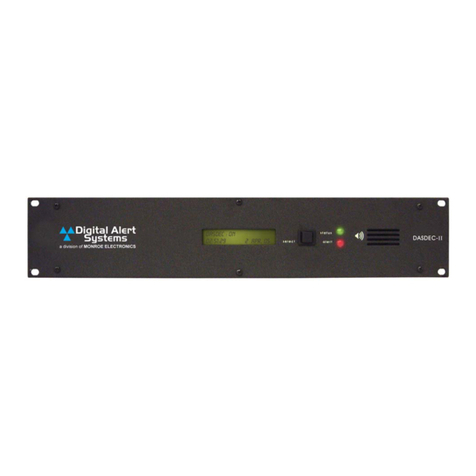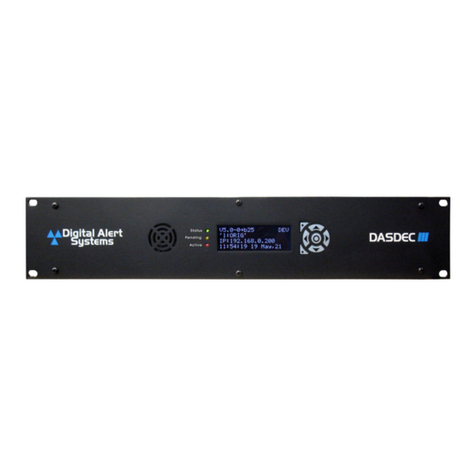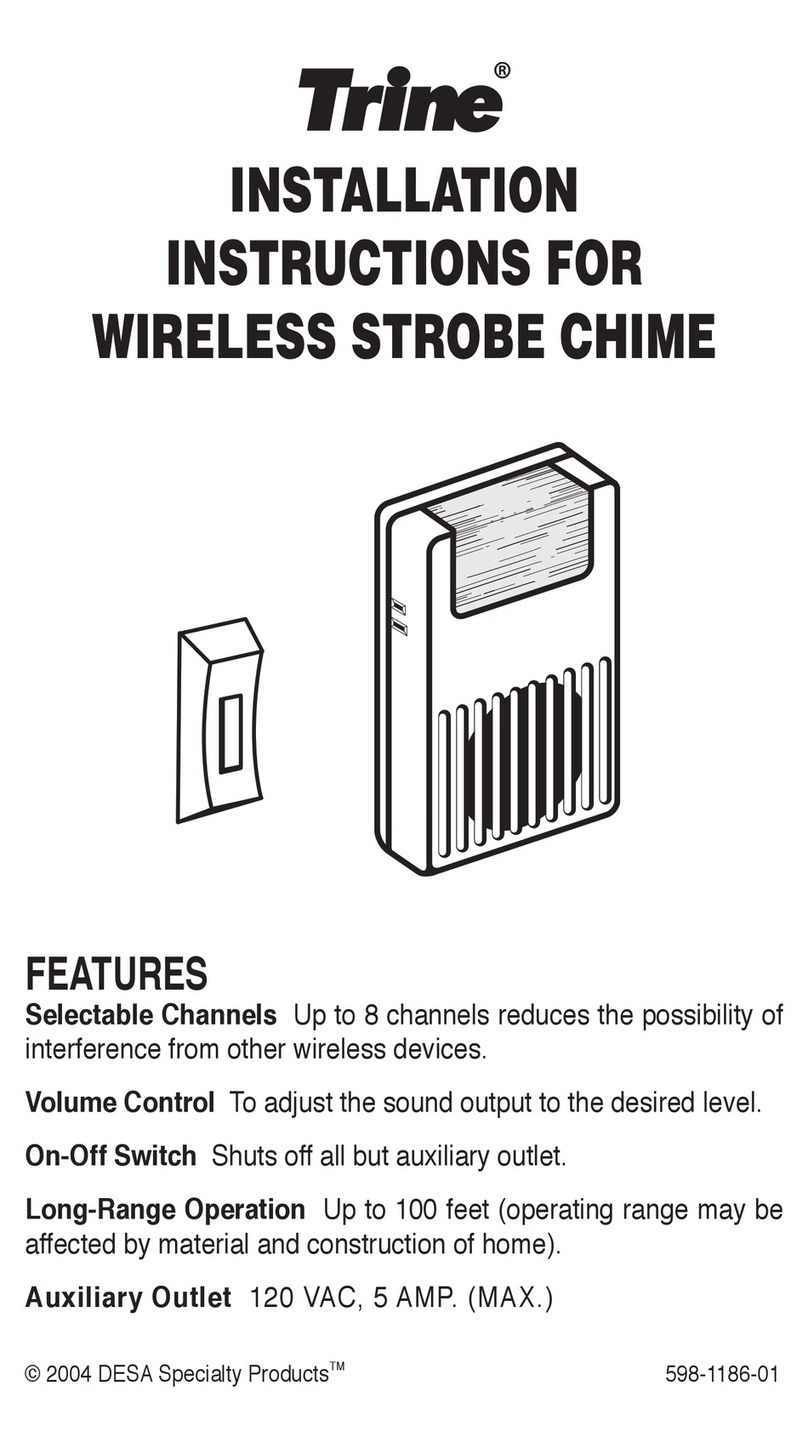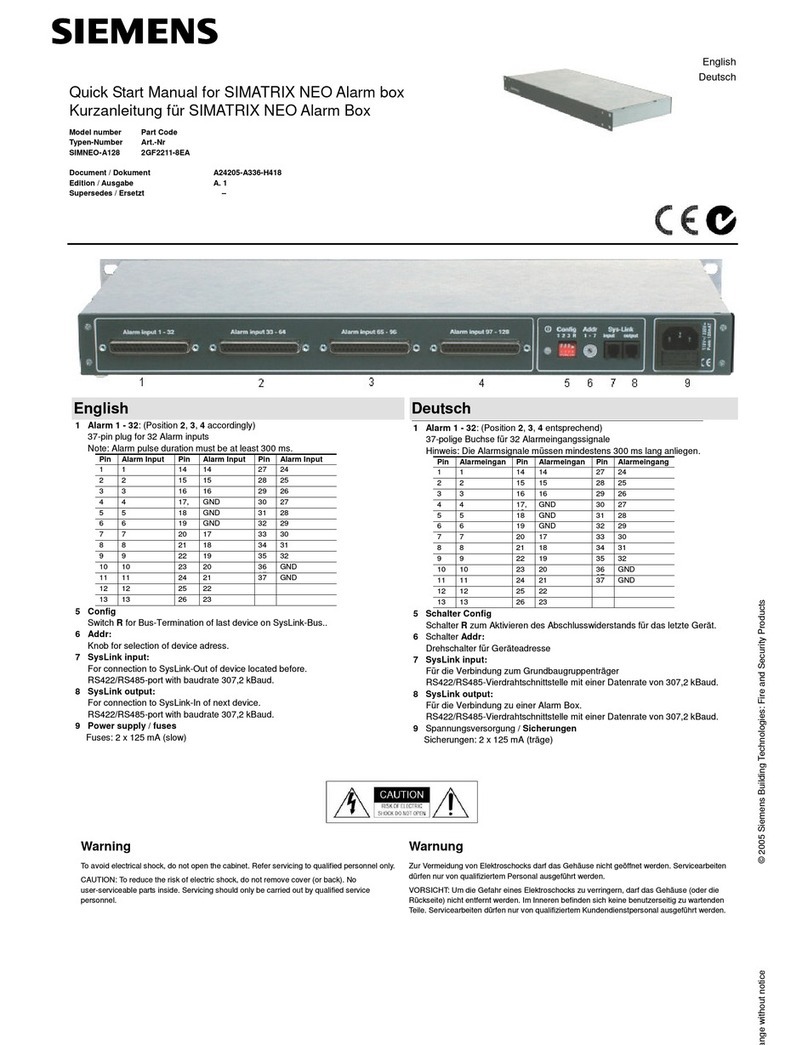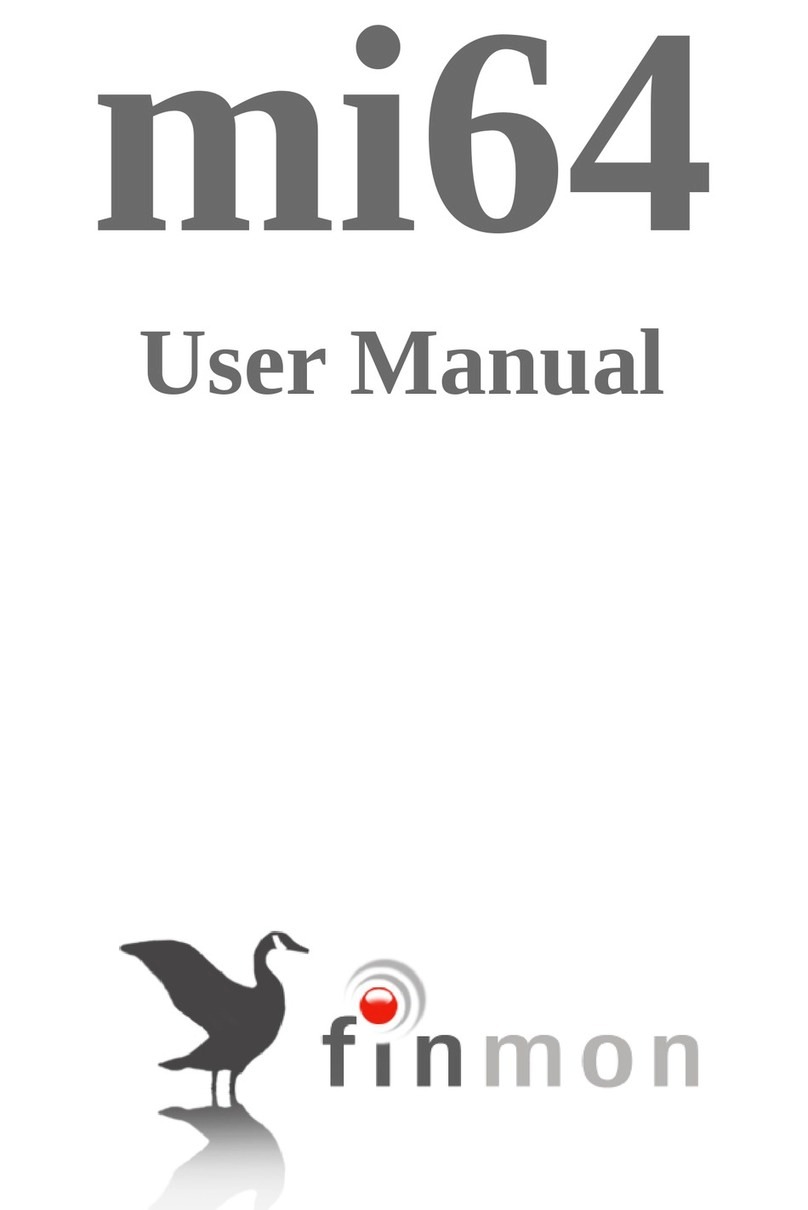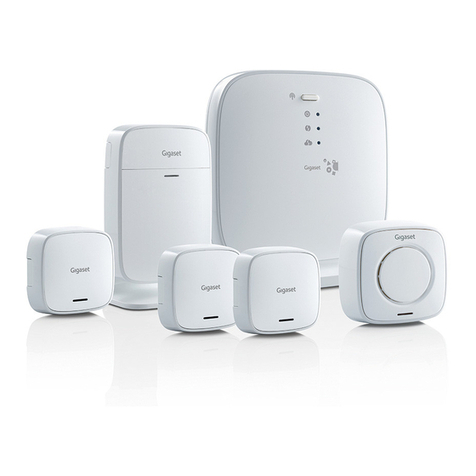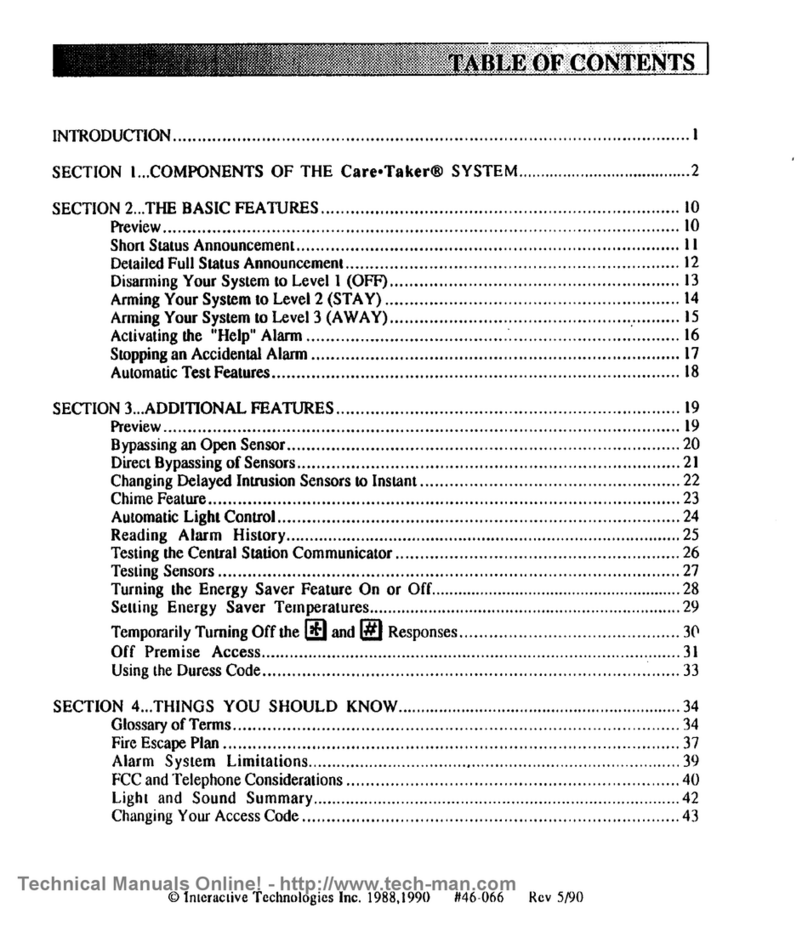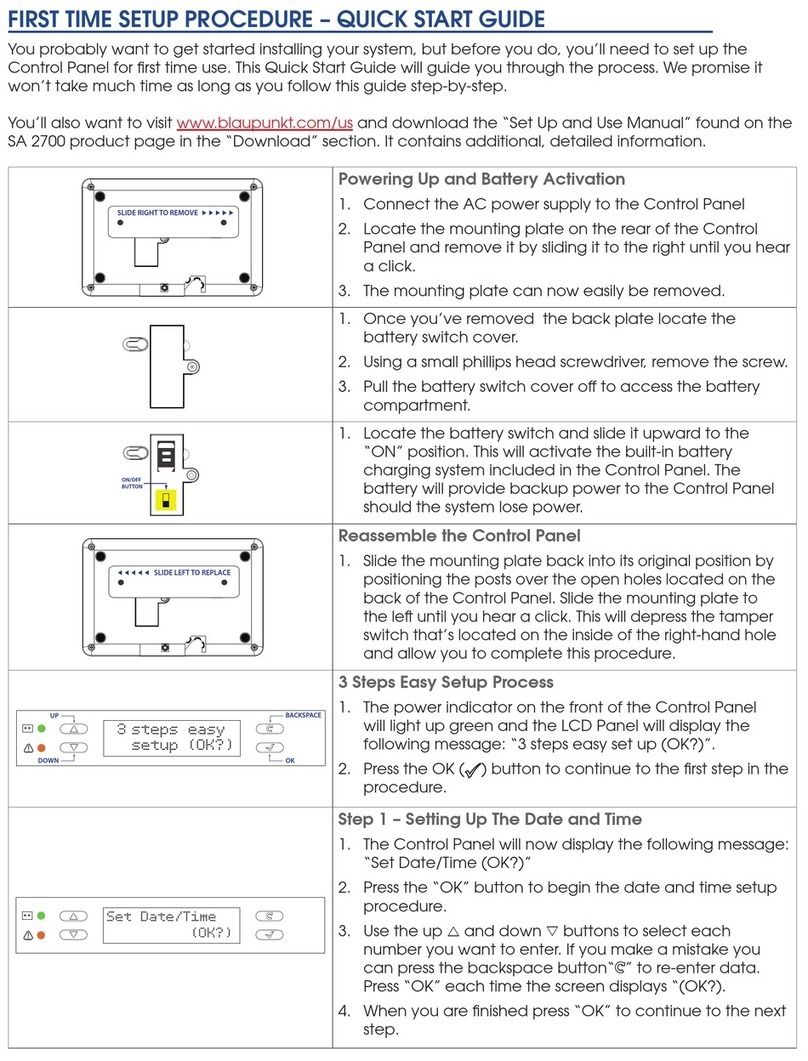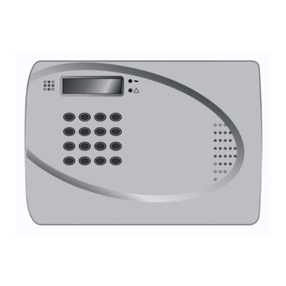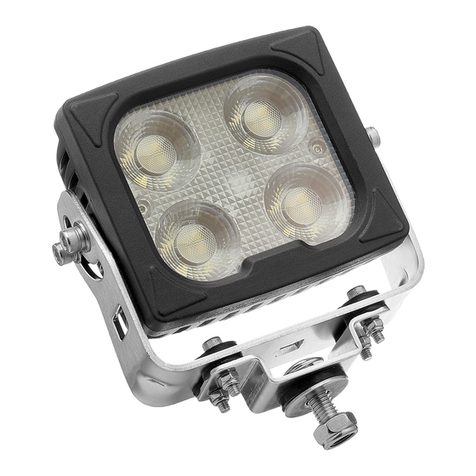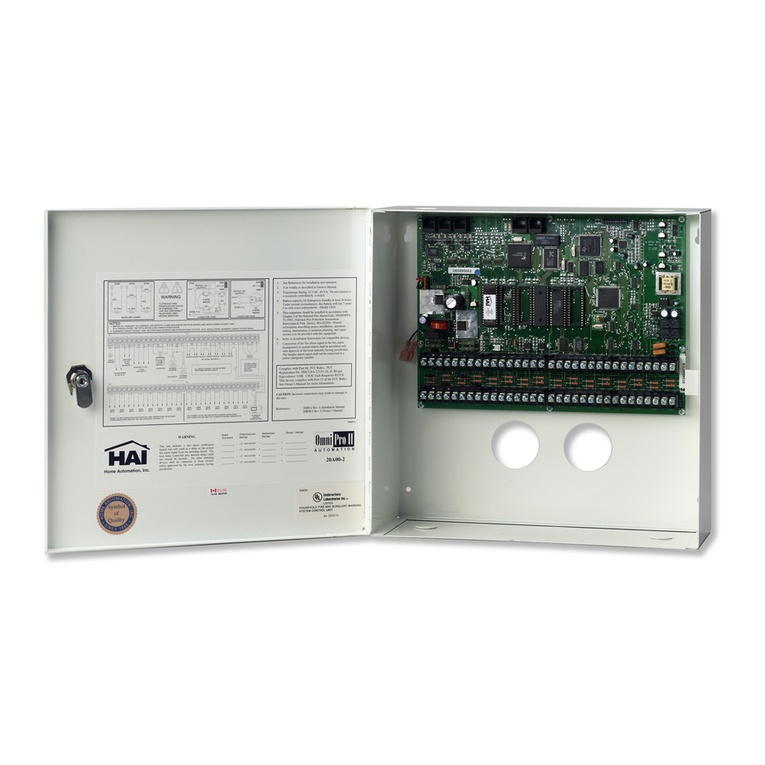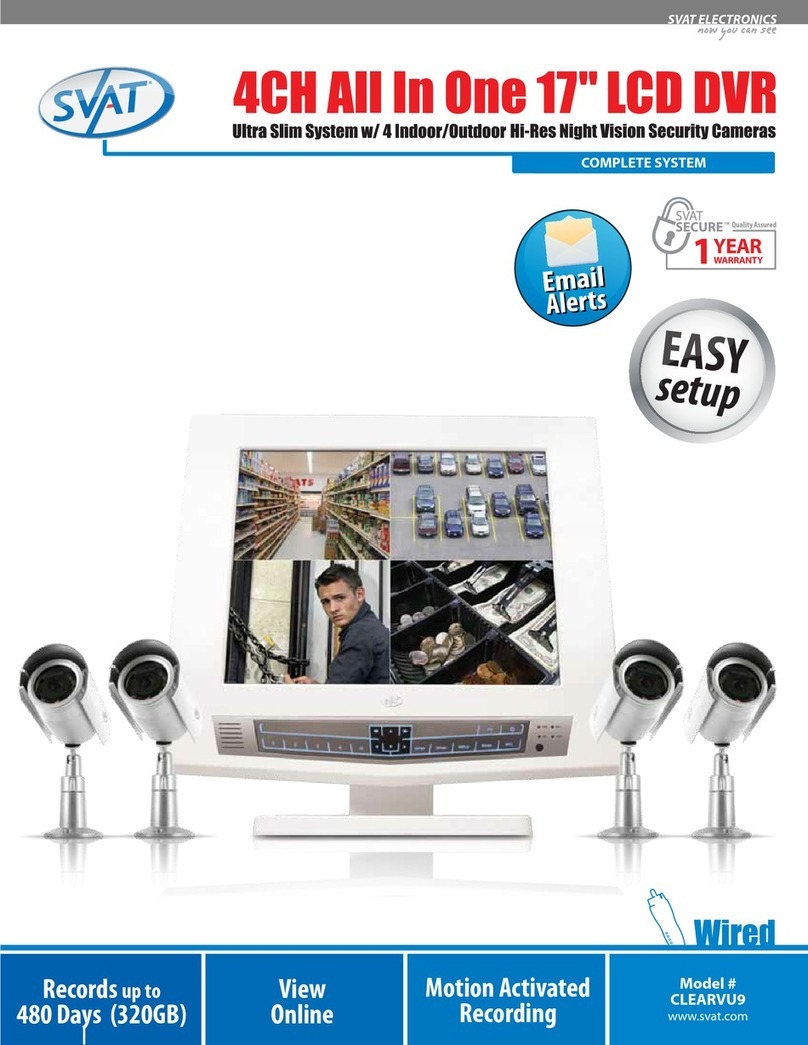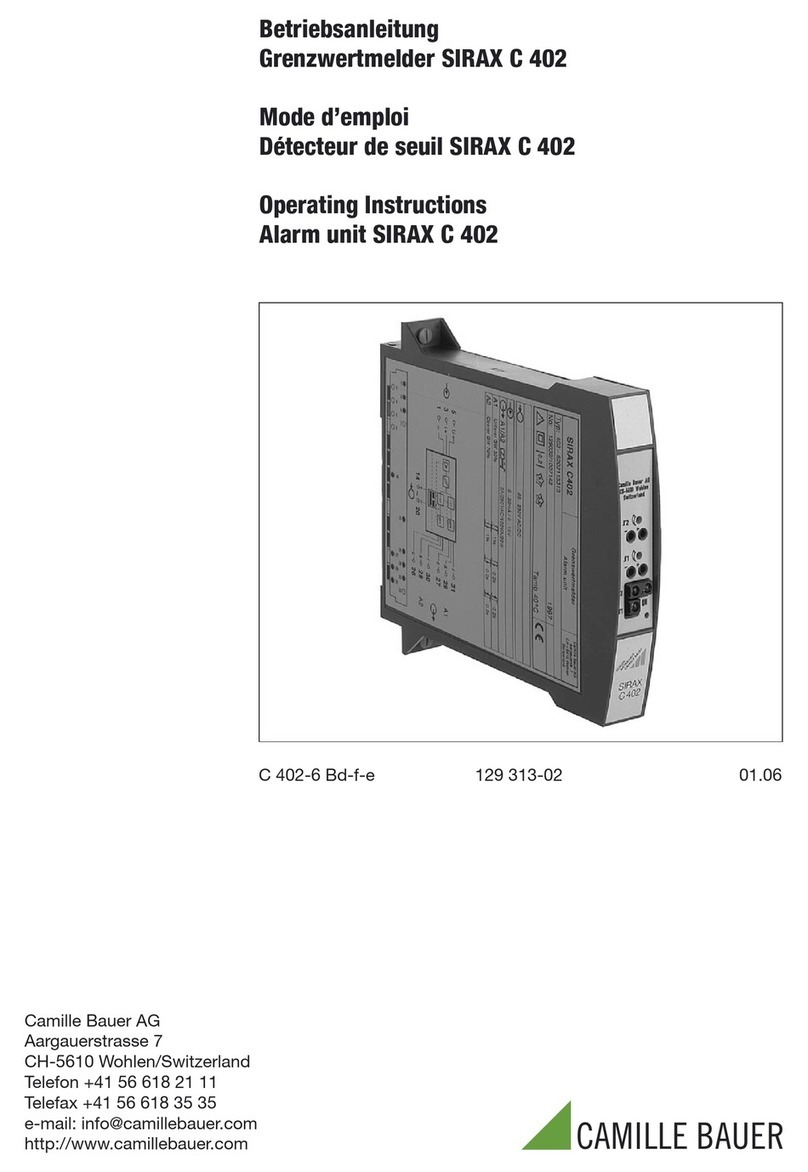Digital Alert Systems DASDEC-III Manual

Digital Alert Systems
585-765-1155 | fax 585-765-9330
100 Housel Ave. | Lyndonville | NY | 14098
www.digitalalertsystems.com
Copyright © 2022 Digital Alert Systems, Inc. Information herein is considered accurate at the time
of publication. We constantly strive to improve our products and services therefore some
specifications are subject to change without notice. DASDEC, MultiStation, and EAS-Net are
trademarks of Digital Alert Systems. All rights reserved.
DASDEC™-III
Hardware/Installation Guide
Revision 1.0
Digital Alert Systems, Inc.
100 Housel Ave •PO Box 535 • Lyndonville, NY 14098
www.digitalalertsystems.com

Digital Alert Systems DASDEC-III Hardware/Installation Guide
Revision 1.0 Page 2 of 16
Table of Contents
FCC Information ......................................................................................3
Register your DASDEC-III.........................................................................4
Introduction:...........................................................................................6
Hardware: ...............................................................................................6
Front Panel:.............................................................................................6
Front Panel Display: ................................................................................6
Back Panel...............................................................................................8
Installation ..............................................................................................8
Radio Antennas.......................................................................................8
Audio Wiring ...........................................................................................9
Video Wiring .........................................................................................11
MPEG Encoder ......................................................................................11
General Purpose
Input/Output (GPIO) ...............................................12
Serial Port Wiring ..................................................................................13
Direct Connection .................................................................................14
Hub/Switch
Connection
..........................................................................14
Specifications ........................................................................................15

Digital Alert Systems DASDEC-III Hardware/Installation Guide
Revision 1.0 Page 3 of 16
FCC Information
Disclaimer
DIGITAL ALERT SYSTEMS, INC. MAKES NO WARRANTY OF ANY KIND WITH REGARD TO THIS MATERIAL,
INCLUDING, BUT NOT LIM-
ITED
TO,
THE
IMPLIED
WARRANTIES
OF
MERCHANTABILITY
AND
FITNESS
FOR
A
PARTICULAR
PURPOSE.
Digital
Alert
Systems
shall
not be liable for errors contained herein or for incidental or
consequential damages in connection with the furnishing, performance, or use of this material. The only
warranties for Digital Alert Systems products and services are set forth in the express warranty statements
accompanying such products and services. Nothing herein should be construed as constituting an additional
warranty. Digital Alert Systems shall not be liable for technical or editorial errors or omissions contained
herein.
Copyright © 2004-2022 Digital Alert Systems, Inc. All rights reserved.
Alert Agent™, DASDEC™, EAS-Net™, MultiPlayer™, MultiStation™, One-Net™, OmniLingual™, PureCAP™,
PureCAP™Plus, TDX™, and Triggered CAP Polling™are trademarks of Digital Alert Systems, Inc. All other
trademarks mentioned in this document or website are the property of their respective owners. While every
precaution has been taken in the preparation of this document, Digital Alert Systems assumes no
responsibility for errors or omissions. Neither is any liability assumed for damages resulting from the use of
the information contained herein.
Safari is a registered trademark of Apple Inc.
CODI is a registered trademark of Chyron Corporation.
Chrome is a registered trademark of Google Inc.
VDS-830, VDS-840, Starmu and Star-8 are trademarks of Keywest Technology, Inc.
Internet Explorer is a registered trademark of Microsoft Corporation
Firefox is a registered trademark of the Mozilla Foundation
SqueezeMax is a trademark of Utah Scientific, Inc.
FCC Information
FCC
ID:
R8VG3DAS01
The DASDEC3 complies with Part 11 (47 CFR 11) of the FCC’s rules for EAS encoders and
decoders, including a Declaration of Conformity for Common Alerting Protocol (CAP)
compliance, and are registered with the FCC under identification number: R8VG3DAS01.
This equipment has been tested and found to comply with the limits for a Class A digital
device, pursuant to Part 15 of the FCC Rules. These limits are designed to provide reasonable
protection against harmful interference when the equipment is operated in a commercial
environment. This equipment generates, uses, and can radiate radio frequency energy and,
if not installed and used in accordance with the instruction manual, may cause harmful
interference to radio communications.
Operation of this equipment in a residential area is likely to cause harmful interference in
which case the user will be required to correct the interference at his/her own expense.

Digital Alert Systems DASDEC-III Hardware/Installation Guide
Revision 1.0 Page 4 of 16
Register your DASDEC-III
Register your DASDEC-III to stay up to date with the latest software and news regarding your DASDEC-III
and future changes. To register, fill out the form at www.digitalalertsystems.com/product-registration
and submit.
Or, scan the QR code to the right or on the S/N label on the unit's rear panel to submit your information.
You will be notified by email of the latest updates and enhancements that can be downloaded from our
website.
Accessories included:
•Power cord
•7-pin terminal block
•Network crossover cable,
•Four rack mounting screws.
•A VGA Dongle is provided when optional DAS3-MPEG2 or MPEG-DASH are purchased.
Items NOT included:
oWiring for audio and RF connections.
Note: ADAPTERS MAY BE REQUIRED to connect the audio sources. For more information, refer
to the sections regarding Program Audio and Monitor 4 Wiring –Analog/ AES Digital.

Digital Alert Systems DASDEC-III Hardware/Installation Guide
Revision 1.0 Page 5 of 16
Getting Started –What’s needed:
•A PC, laptop, or tablet and an RJ45 networking cable.
•A valid, unused IP address. Speak with your network administrator for a proper IP address.
•The county names for the areas where the equipment will be installed and/or transmitting.
•The radio frequencies for your Local Primary 1 (LP1) and Local Primary 2 (LP2). These can be
obtained from the state EAS plan or the State Emergency Communications Coordinator (SECC) for
your state. If applicable, you may also need the frequency for a NOAA radio station.

Digital Alert Systems DASDEC-III Hardware/Installation Guide
Revision 1.0 Page 6 of 16
Introduction:
The DASDEC-III Emergency Alert System (EAS) Analog and Digital CAP/ Encoder/Decoder platforms are
relatively easy to install and set up. This manual covers the installation and hardware connections of the
DASDEC-III.
Hardware:
The DASDEC-III is a 2U rack-mounted EAS device that utilizes standard computer technology in a
dedicated chassis with broadcast quality connectors. The PC motherboard uses industry-standard
connectors for USB, PS/2, serial, VGA, HDMI, networking, and audio. In addition to the standard
motherboard connections, the platforms feature broadcast-quality video, audio, antenna, contact
closure, and power connectors. All external connectors are located in the rear of the unit. An LCD with a
backlit tactile keypad, status/alert LEDs, and an internal speaker are located on the front of each unit.
Front Panel:
Front Panel view of the DASDEC-III
Front Panel Display:
The backlit LCD displays information as “pages” with four lines of data. The fourth line always displays
the currently set date and time. The pages may be cycled using the up and down arrows on the
directional pad to the right of the display. The display automatically switches back to page one after a
few seconds of inactivity.
Page One:
•Line 1 - the total number of active alerts.
•Line 2 –a crawl of one of those active alerts
and whether the alert was decoded (D),
originated (O), CAP (C), or forwarded (F).
•Line 3 –the time that the currently displayed
alert will end.

Digital Alert Systems DASDEC-III Hardware/Installation Guide
Revision 1.0 Page 7 of 16
Page Two:
•Line 1 –audio sources 1 through 4. Press
the down arrow again to display the IPAWS
sources.
•Line 2: source status: HIGH, ELEVated, OK,
LOW, or ZERO.
•For IPAWS sources: CONNected, POLLing,
or OFF is displayed.
Page Three:
•Line 1 –device IP address.
•Line 2 –subnet mask.
•Line 3 –default gateway IP address.
Page Four:
•Line 1 –current software version.
•Line 2 –device name of the DASDEC-III.
Status LEDs
Light Emitting Diodes (LEDs) display a variety of system status
conditions.

Digital Alert Systems DASDEC-III Hardware/Installation Guide
Revision 1.0 Page 8 of 16
Back Panel
All hardware connections are provided on the device’s back panel.
Back Panel View of the DAS3-GX or DAS3-EX with DAS3-AES and EXP-2NICGIG options
The image above includes the Dual Port Gigabit Ethernet Expansion and AES Audio Options. Not all
DASDEC-III devices will contain the same rear connectors.
The Expansion Slots are used for optional additional Network Interfaces and additional EAS Audio input
hardware. Expansion hardware is only available with the DAS3-EX or the DAS3-GX.
Installation
The DASDEC-III frame mounts in an EIA-compliant equipment rack by means of four rack screws fastened
through the front mounting ears.
For safe, long-term reliability:
•Ensure the ambient air temperature surrounding the EAS device is within the product’s
specified operating temperature range.
•Maintain adequate ventilation within the rack.
•Ensure that adequate space exists on all sides of the frame for sufficient airflow. It is
recommended a 1RU space be maintained between equipment, to avoid the transfer of heat
between devices.
•Ensure the location of the EAS device is accessible, dry, and free of dust.
Rack Units
Height
Depth
Width
Weight
2RU
3.50” (8.89 cm)
12.0” (30.48 cm)
19.0” (48.26 cm)
15 lbs (6.8 kg)
Radio Antennas
The EAS device can be equipped with two or three (optional) internal radio receivers and connect using
Radio 3
(Option)
4th Audio In
Program Audio In/Out
Radio 1 & 2
(Option)
GPI/O
AES Audio In/Out
(Optional)
Power
Expansion Slot
Secondary Audio Input
AC Power
Keyboard/Mouse
Dual USB 2.0
VGA
HDMI w/Audio
Main Network
Dual USB 3.0
Serial Port
Dual Network
(Option)

Digital Alert Systems DASDEC-III Hardware/Installation Guide
Revision 1.0 Page 9 of 16
industry-standard F-type connectors for each receiver. If not equipped, each radio’s F-type connector
will be covered with a cap plug. Review your state’s Emergency Alert System Plan for the appropriate
monitoring assignments; these assignments will assist in determining the proper antenna for the
frequencies that need to be monitored.
The EAS device’s internal radios are designed to receive the following frequencies:
For proper reception, use a good quality, shielded RG6 coaxial cable and connectors. The quality of the
incoming audio signal will affect the operation of the audio decoders, and the quality of the forwarded
audio messages.
Audio Wiring
Overview
The DASDEC-III platform has two types of analog audio: EAS Monitored Audio and Program Audio.
EAS Monitored Audio Inputs feed the internal EAS decoders for processing. Only signals with EAS
information should be directed to these inputs. Program Audio connections are used for internal
switching of program audio.
Program Audio and Monitor 4 Wiring –Analog/AES Digital (optional)
The DASDEC-III utilizes RJ45-style connectors for analog and digital audio. These balanced audio outputs
deliver a continuous audio program stream that switches between the Program Audio inputs and EAS
audio during an alert.
The following wiring diagram illustrates the connections using common T-568B cabling.
Connection diagrams for EAS Monitor Input 4 (DAS3-EX/GX), Analog and AES Program Audio
There are several sources for professionally terminated cables in various lengths and formats. One
excellent source is Studio Hub (https://studiohub.com/adapters/)
Band
Frequencies
Min.
Input
Level
Max. Input Level
FM
87.9 - 107.9 MHz
30-40 uV(-80 to -77 dBm)
1mV (-48 dBm)
NOAA
162.440 - 162.550 MHz
3-4 uV (-98 to -97 dBm)
<500 uv (-55 dBm)
AM
530 - 1700 KHz
2-3 uV (-102 to -98 dBm)
<500 uv (-55 dBm)

Digital Alert Systems DASDEC-III Hardware/Installation Guide
Revision 1.0 Page 10 of 16
AES Digital Audio Wiring
An optional AES audio input/output function is available for the DASDEC platform. This includes the
capability for an AES digital audio output, along with a switching AES audio output when an AES audio
input is connected. Refer to the diagram above for the cabling of the AES audio inputs and outputs.
EAS Monitoring Inputs
Radio signals for the DASDEC-III to decode EAS alerts can be received in two ways:
1. Via internal radios, connect to your site’s antenna via a coaxial connection.
2. Via external radios that pass on audio to the DASDEC-III via a line-in-jack.
Four connection options are available.
•A line-in-jack connection with external radios using a 3.5mm jack. and
•An additional sound card (EXP-EAS) with its 3.5mm jack.
•Radio tuners Radios 1, 2, and 3
•Monitor 4 input
See the back panel graphic on the next page for references to specific components.
Back Panel View shown with optional EXP-2NICGIG and EXP-EAS monitoring audio expansion
•Each audio line connector (3.5mm TRS) supports two EAS decoders. The left side of the input is
decoded separately from the right side.
•The line-in-jack option uses a monoaural connection, meaning that one 1/8 mini plug will need to be
wired to provide the audio of two sources provided from external radios.
•Refer to the diagram below:
▪The tip is left input, the ring is right input, and the sleeve is common ground.
▪Line-in-jack will utilize the blue 3.5 mm jack for main input 1 & 2 and if applicable
the blue 3.5 mm jack on the sound card or aux input 3 & 4.

Digital Alert Systems DASDEC-III Hardware/Installation Guide
Revision 1.0 Page 11 of 16
Video Wiring
HDMI-Video Output is a standard on the DAS3-GX model and optional for all other DASDEC-III units.
When enabled, full-screen emergency alert details and accompanying audio is present during alert
forwarding and/or alert origination via the HDMI connector on the back panel.
MPEG Encoder
The optional MPEG Encoder requires installing a “dongle” (shipped in the accessory kit) that must be
placed on the VGA port. The system must have this installed during a cold start for the system to
properly recognize that the port is active.
Back Panel View showing placement of MPEG “dongle”

Digital Alert Systems DASDEC-III Hardware/Installation Guide
Revision 1.0 Page 12 of 16
General Purpose
Input/Output (GPIO)
The EAS platform comes standard with two General Purpose Input (GPI) contact closures and two
General Purpose Output (GPO) relays. The connector is located on the back panel, a 7-pin pluggable
terminal connector is provided.
GPIO
Terminal
Connector
GPO relay outputs are programmable. Triggering can be filtered against specific alert FIPS Groups and EAS
Group codes. Events that can trigger a GPO relay include:
•Remain closed during EAS audio playout
•Momentarily closed at start of EAS audio playout
•Momentarily closed at start of an alert that has been decoded but not forwarded,
•Remain closed if an alert is held or delayed pending a GPI action.
The EAS device comes with two General Purpose Input (GPI) contact closures. They can be programmed
to trigger a variety of actions, such as:
•Issue a Required Weekly test
•Trigger origination of an alert header/attention signal, pausing for voice dub
of the audio message, followed by trigger of the EOM audio
•Review of audio portion of an active alert
•Active alert acknowledgment
•Forwarding of a monthly test with original audio
•Re-enabling of active alert forwarding capability
Additional Expansion GPIO Options
For installations that require additional GPIs and GPOs, there are several options available that will
expand the standard capabilities. An internal GPIO card may be installed in the PCI expansion slot to
enable eight additional GPIs and eight additional GPOs. If the PCI expansion slot is unavailable, several
network-connected GPIO devices, such as the R190A Remote LAN Hub Controller / Net GPIO, are
options. The DASDEC platform can mix and match any combination of internal and network-connected
GPIO devices.

Digital Alert Systems DASDEC-III Hardware/Installation Guide
Revision 1.0 Page 13 of 16
Serial Port Wiring
Each EAS device has one RS-232 serial port on the back panel. The serial ports connect to and drive a
variety of external video character generators and BetaBrite LED signs. The software supports a wide
variety of serial protocols, including the most commonly used protocols in legacy EAS equipment, such
as TFT Standard and Sage Generic.
An optional USB/serial port expander can provide up to four additional RS-232 serial ports. This option
is useful when additional character generators and LED signs are needed.
Each serial port has the same pin-out, as shown below.
Serial Port Conns (Chassis Side)

Digital Alert Systems DASDEC-III Hardware/Installation Guide
Revision 1.0 Page 14 of 16
Direct Connection
Direct Connection
1. Connect one end of the factory-supplied CAT-5 network crossover cable to the Main Network
Interface port at the back of the EAS device and the other end to the network interface port of
a standalone PC or laptop computer. Once the EAS platform is powered up and completely
booted, it can be accessed via a web browser launched from the directly connected, customer-
supplied standalone computer.
Attention
It is advised that you contact a network administrator before starting the following
procedure, as a valid IP address and subnet mask settings are required to complete this initial
setup. Working knowledge of how to change the network settings of the standalone computer
is also necessary.
Hub/Switch
Connection
Hub/Switch
Connected
The primary difference between this type of connection and the direct connection method is the
inclusion of additional networking hardware.
1. Connect a standard CAT-5 network cable to the Main Network Interface port
at the back of the EAS device and the other end into the open port of a routing hub or
other network switching device.
2. Once the EAS device is powered up, booted, and operational, it should be accessible via
a web browser running on any remote computer on the local area network routed to
see the address 192.168.0.200.

Digital Alert Systems DASDEC-III Hardware/Installation Guide
Revision 1.0 Page 15 of 16
Specifications
DASDEC-III Specifications
DAS3-EL
DAS3-EX
DAS3-GX
Monitoring Audio Inputs: monaural EAS monitoring inputs
Two (2)
Four (4)
Four (4)
Internal Monitoring Receivers –Integrated Dual Tri-Band receivers (AM/FM/WX)
Tunable frequencies: AM 520 to 1720 kHz | FM 76 to 108 MHz | WX 162.4 to 162.55
MHz
Connector: “F” type - 50Ω
DAS3-2RADIO
Optional
DAS3-3RADIO
Optional
DAS3-3RADIO
Standard
Monitoring Audio Expansion
EXP-EAS-E adds two (2) additional monaural inputs (6 total)
N/A
Optional
Optional
Program Audio
Analog Input / Output –Balanced 600Ω stereo audio input - fail-safe bypass relay.
Connector: RJ-45 in/out using StudioHub™wiring standard |MAY REQUIRE ADAPTORS - SOLD SEPARATELY¹
Digital Input–DAS3-AES
Balanced 110Ω AES/EBU digital audio input
Connector: RJ-45 in/out using StudioHub wiring standard
MAY REQUIRE ADAPTORS - SOLD SEPARATELY¹
Optional
Optional
Standard
Digital Output –DAS3-AES
Balanced 110Ω AES/EBU digital audio synced to incoming rate, or 48 kHz without
reference
Connector: RJ-45 in/out using StudioHub wiring standard
MAY REQUIRE ADAPTORS - SOLD SEPARATELY¹
Optional
Optional
Standard
Auxiliary Audio Output –Un-balanced lo-Z audio | Connector: 1/8” mini-plug
N/A
Standard
Standard
LAN Interface –TCP/IP Ethernet:
One (1) 10/100/1G BASE-T | Default Address: 192.168.0.200 |Connector: RJ45 |Green link & amber data indicators
Network Expansion
USB-1NICGIG External single port adaptor USB-RJ45
Connector: USB-RJ45
Optional
Optional
Optional
EXP-2NICGIG Internal dual 10/100/1000 BASE-T
IP addressing: static (ports 1-4) or DHCP (ports 1 & 2)
Connector: RJ45
Optional
Optional
Standard
Video Output - Full-screen Slate Video Output License
VGA: Maximum resolution: 1920 x 1200 @60Hz | Connector: DB-15
HDMI 1.4: Max. resolution: 4096x 2160 @30Hz|Connector: Type A
HDMI output includes embedded alert audio
Optional
Optional
Standard
General Purpose Inputs/Outputs (GPIOs)
Two (2) software-defined inputs
Two (2) software-defined outputs rated 2A @30VDC

Digital Alert Systems DASDEC-III Hardware/Installation Guide
Revision 1.0 Page 16 of 16
Connector: 7-pin detachable terminal strip
Serial Port –One (1) RS232 data 9 pin “D” connector | Optional USB/4RS232 adds four additional RS-232 ports (5 max.)
USB ports:
Two (2) USB V2.0/1.1 | Connector: type A sockets
Two (2) USB V3.1 | Connector: type A sockets
Local Control Ports –Keyboard/Mouse | Connector: PS-2 type socket
Front Panel Display –LCD matrix display: Four rows of 20 characters
Status lamps –Green, Yellow, Red
Monochrome
backlit
Color backlit
Expansion Port –Triple EXpansion slots for the following options:
EXP-EAS-E –Two (2) monitoring audio inputs (6 total)
EXP-GPIO-E –Eight (8) additional GPIs and GPOs (10 total) using external breakout box
EXP-2NICGIG –Dual gigabit network expansion (3 total)
N/A
Two expansion
ports available
EXP-2NICGIG
Included
One expansion
port available
Dimensions / Weight –19” W x 12” D x 3.5” H (48.2cm W x 30.4cm D x 8.9cm H) 2RU EIA rackmount / 15 lbs. (6.8 Kgs)
Environmental - Ambient temperature range of 0 to +50 degrees C. Relative humidity of up to 95% (non-condensing)
Table of contents
Other Digital Alert Systems Security System manuals
